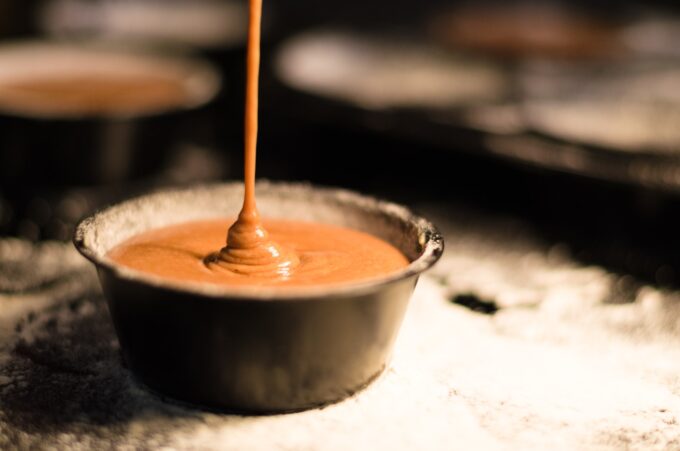A glance at the ingredients list for these ultra-tasty sweet treats might leave you scratching your head – because they are so similar! Which one has eggs? Which one has cream? Why is one runny but one set?
They’re all delicious, and even though they are close in flavor, some people prefer a caramel sauce to butterscotch or a cajeta to a burned, runny toffee.

What is toffee?
Sweet, chewy piece of candy that has the ability to pull out a filling if you’re not careful! You might not know this, but toffee is butterscotch that has been cooked down for a longer period of time.
The toffee starts as the butter and brown sugar base. Butterscotch is cooked to what is called a soft-crack stage. The soft-crack start is about 95% sugar and cooked at between 270 and 289 degrees F. Hard-crack, where toffee is made, is between 295 to 309 and is about 99% sugar.
What is butterscotch?
Butterscotch is a soft-crack type of candy and is made by melting brown sugar and butter together.
The sugar slowly melts into the butter, and other ingredients can be added salt, vanilla, and cream – after caramelization has happened.
The key difference between butterscotch, toffee, and caramel is that caramel is made using white sugar, but butterscotch and toffee both use brown sugar.
Butterscotch has a deeper flavor than caramel, too, because brown sugar has molasses in the sugar that is released as it cooks down.
What is caramel?
Caramel might be one of the most simple to make; all you will do is heat white granulated sugar to 340 degrees F. The slow process will break down all sugar molecules, leaving you with a smooth, golden syrupy liquid.
Many people add extra ingredients to change the flavor and textures of their caramel: vanilla, milk, butter, and salt.
There are two different types of caramel that you will make, one dry and one wet. Dry caramel is one that has been made without adding water to it. Wet caramel is made when water is added to the process.
Caramel is considered one of the easiest home confections to make, so long as you keep an eye on it and watch out for graininess or crystallization – you can add a little bit of water and cook the mixture gently to help diffuse that situation.
The purpose of adding water can be to help distribute the heat better and avoid crystalization and burning.
- To make the caramel sauce: cook for about 5-10 minutes at 215-235 degrees F.
- To make chewy caramel sweeties: cook for about 10-15 minutes at about 245 degrees F
- To make hard candies: cook for about 15-20 minutes at between 300-310 degrees F.
The texture, consistency, and taste all vary between these candies, even though they might look the same at first glance.
There is one thing that goes hand in hand with caramel flavors, and that is coffee; check out these recipes and add your own caramel to them: Salted Caramel Banana Smoothie.














